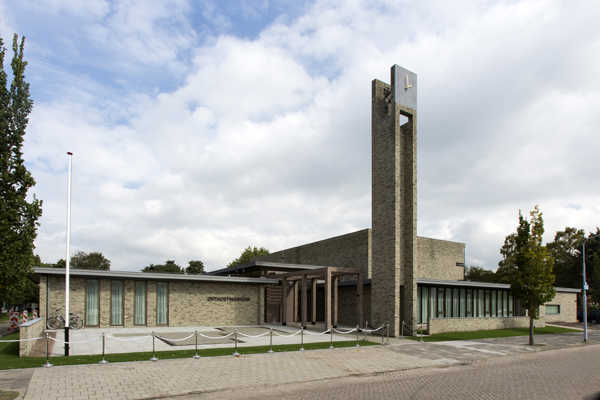Facing bricksBrick R
Technical data sheets
- Color description
- The colour of the body is predominantly grey.
- Manufacturing dimensions (L x W x H)
- ca. 225x74x54 mm (LxWxH)
- Quantity / m² with a traditional joint
- 64 (12 mm)
- Number / m² with a thin joint
- 73 (6 mm)
Brick R
Grey ecological Waal format
Brick R is a grey (Premium ochre greyish) moulded brick produced using the Wasserstrich method. It carries both our Hand-Made label and the ECO-7-size label. Our Hand-Made label guarantees a strong, natural nuance. The unsanded Brick R also carries the ECO-7-size label because it is 7 cm deep, unlike the classic Waal format which is 10 cm deep. Minerals are added during the production process to give this facing brick a unique surface texture.
case studie Brick R

Rugged and robust character of Brick R triumphs as part of an architectural gem
Cadiz, 40.000m² of housing, offices, a residential care facility, cafés, restaurants and shops
Cadiz is a multifunctional block in the Cadixwijk on the Eilandje in Antwerp. The construction of this prestigious project has helped to create a brand new, fashionable district within the city.

Vertical applications concept
Facing bricks as a creative source of a new school building
A brand new building has been erected at the north side of the sports facility, on the playgrounds of the elementary school building. The new school building is home to a nursery school and equipped with several class rooms and all of the facilities that teachers need to fulfil their tasks in the best way possible.

Modest church building with a natural look
A unique brick for a unique project
The architecture of the new church building is based on two starting points: the powerful lines of the original burnt down church, and the wish to make the building a great place to meet.

Oldenzaal Crematorium: vibrant brick volume radiates desired serenity
Ecological Nature7 Brick R and narrow linea 7036 join forces to create striking relief pattern
The new Oldenzaal Crematorium is situated in a beautiful location, near the cemetery, in a landscape characterised by wooded countryside and gentle hills. The small developed area – initially only earmarked for a cremation area – led to the sleek, compact design in which the ceremony room and the reception room are positioned above the cremation area.

Green-grey ecological ‘Nature7 Brick R’ adorns iconic residential tower block on Stapelplein in Ghent
360 Architecten creates new landmark as reference point in the renovated old port district in Ghent
The most sustainable form of urban renewal is the upgrading of existing neighbourhoods. Ghent is excelling at just that as a wind of change is clearly blowing in the old port area of Oude Dokken.
Continue reading
References
How to Install ?
Preparation of the construction site
- Always order the full amount of bricks required for a specific site. In this way, the entire order can be made during one production run.
- Try to have the full order supplied at one time. If this creates several deliveries, always mix a number of packs from the previous delivery with a number of packs from the new delivery. This procedure is especially recommended in case of re-order or for an additional order.
- Take bricks diagonally across the pack.
- Draw and use bricks from at least five different packs.
- For setting out, use bricks from the delivery made to the site in question. Do not exclusively use the theoretical dimensions of the brick, or samples previously supplied, or different production run from that intended for the site.
- As soon as the bricks arrive on site, check delivery tickets and certificates against the specification and order. Also check that there are no visible inconsistencies with the order.
- Do not lay bricks in freezing weather or protect the ‘fresh’ masonry with insulating mats in order to avoid frost damage to the mortar.
- In the case of prolonged dry hot weather, lightly dampen the newly laid brickwork to stop the mortar drying and curing too quickly.
- Do not lay bricks in precipitation in order to prevent mortar from running on the wall.
Avoid Efflorescence
- During and after laying, protect the newly built brickwork for a height of at least 60 cm - but ensure there is airspace between the brick face and the waterproof covering.
- Provisionally install rainwater down pipes to avoid saturation of the newly laid brickwork
- Never lay bricks in driving rain conditions





















